Charles Pakana (VAN):
Throughout 2023 and 2024, two research fellows from the National Centre for Reconciliation, Truth, and Justice, Greek-born Maria Dimopoulos and Sri Lankan-born Shankar Kasynathan led an innovative and timely project that sought to engage multicultural communities in areas of reconciliation, truth, and justice called Roads to Reconciliation. The project operated in regional, rural and metropolitan communities across 25 Victorian local government authority areas. Joining me today are those two leaders. Maria and Shankar, thanks for speaking with me today.
Maria Dimopoulos:
Thank you so much.
Shankar Kasynathan:
Thanks for having me.
Charles:
Maria, we’ll kick it off with you. What was the genesis of this particular project?
Maria:
A conversation that I think we’ve been having over many, many years. Shankar, would you agree?
Shankar:
Absolutely.
Charles:
Now, you were both though commissioners at the time with the Victorian Multicultural Commission?
Shankar:
Yes and no. So I was finishing up my term, four-year term as a commissioner. The deputy chairperson who’s sitting to my right here, Maria, had finished up some time earlier. But I think, Uncle Charles, what’s really important when we talk about the genesis of this project is that both Maria and myself, the story began many, many, many years before. Here I was growing up in the south-eastern suburbs as a Tamil refugee. Maria was growing up as a Greek woman in the regional area of Geelong. And experiences that both of us had in different ways led us meeting together. First yes, at the Victorian Multicultural Commission where our friendship began, and then continued under the leadership and support of Professor Andrew Gunstone at the National Centre for Reconciliation, Truth, and Justice, which is where this project was born.
Charles:
Right. What was the thought though on going forward with the project? Maria, you’ve got your hand up. It’s over to you.
Maria:
Well, I also want to say though that these conversations are quite historical and evolutionary. And I say that because, as a young law student, it was quite a shock to grow up realizing that you’d been fed a series of terrible lies about the history of this country, and that your relationship as a migrant to this land, this stolen land, was not a point of conversation anywhere. And so I think that struggle for a lot of migrants over many years in understanding where that conversation needs to go is a key underlying rationale to why Shankar and I in 2023 would even get to a stage where we’re having these conversations.
But I do want to just say that Dr. Jackie Huggins has had a profound influence on making this project happen in that she was the one that suggested Professor Gunstone, of course, in the National Centre as a critical partner in making this happen. But that I always remember driving in a taxi with Jackie many, many years ago in Darwin. And we both got in, and it was a Greek taxi driver. And as we drove through Darwin, he made terrible references to what were then referred as the long grass. And I was devastated because I had thought that there would be a natural alliance between those who’d experienced racialization as migrant other but not realizing that there was a significant difference between being racialized as a migrant to being racialized as an indigenous first person here.
And as she stepped out, she looked at him and said, “I’m one of those people you are talking about.”
Charles:
You mentioned the term long grass. Explain that.
Maria:
I think the communities that at that time were living in Darwin and the outer suburbs of Darwin, who were experiencing incredible levels of poverty and marginalization, who were nonetheless creating communities that were meaningful to these First Nations people, their land, and yet here we were as migrants continuing to benefit from the dispossession and the ongoing lies.
Charles:
Shankar.
Shankar:
I had a very different experience coming into the work in reconciliation in that I was a six-year-old when my uncle, who was working in East Arnhem Land, Yirrkala, an accountant, a business manager who had managed hotels and corporations in Sri Lanka, could not find a single job in this country until he was embraced by the East Arnhem community of Yirrkala.
Charles:
Wow.
Shankar:
And he became a business manager there. They welcomed him to their community. And he turned up with his new family members in our living room one night. And that was my first time I got to engage with his family, which were the Yirrkala people of East Arnhem Land. And I later, Uncle Charles, I later got my own experience as a university student working out where I fit in the world and got work given to me by the people of the East Kimberley, the Gajirrawoong-Miriwoong people of Kununurra, and then again in the northern territory where I was working. And they built my confidence.
And so I feel that I’ve taken a lot from my work in remote Aboriginal communities like my uncle did. And I think of a quote from Lilla Watson, an Aboriginal woman in Queensland who says, “If you’ve come here to help me, you are wasting your time. But if you’ve come here because your challenges are tied up in our challenges, then let’s work together.” And that has been my story since I was a six-year-old, getting to know my uncle’s new family. And it is my experience right across this state, even here in this conversation with you, that Maria and I have found new friends and family that have been created as part of this project.
Charles:
Let me challenge you both then really. Because what surprises me is, Maria, you’re a proud Greek woman, Shankar, you’ve arrived as a Tamil refugee. Why are you focusing so much on Australia’s First Nations rather than your own communities? You are a man of color, Shankar. I’m going to stick with you on this. What’s driven you, apart from what you’ve said, but to focus on this area?
Shankar:
Because there’s hundreds of years and thousands of years of knowledge that my people… When I say my people, refugees, people who are experiencing daily racism, marginalization, discrimination in the workplace. We have so much that we can learn from the resistance and the proud culture and heritage of the world’s largest, longest living civilization. And that’s what has been at the work and the core of this project. When we talk about anti-racism frameworks, when we talk about social cohesion, when we talk about pride and courage and confidence of culture, then where else could we have an opportunity for these new and emerging communities to learn that but from the stories of indigenous resistance, campaigning, advocacy over our lifetimes and before our lifetimes.
Charles:
Maria.
Maria:
Well, for me, coming from a more established community and one where I think we could argue that the reality of that history of racialization is certainly something that motivates me personally, but as a more established community, we are now in a place of privilege. And so when you say why the focus on First Nations people, for me, it’s actually a focus on multicultural communities. It’s more about saying to them, “You’ve been denied so much in the silencing of First Nations voices. You’ve been denied access to the profound richness of this culture and cultures. You’ve been denied the truth of the history of this country. And fundamentally, you have to deal with the reckoning of the injustice that comes from that silence.” That whilst the rationale for migrating to Australia for my family and many other Greek, Italian and other European communities was to get a better life, that has been done at the expense of First Nations people and their dispossession of land.
So unfinished business is a big part of the conversation for me, and ultimately saying to our communities that that denial of place for First Nations people actually makes us poorer for it. So you talk about coming to this country to establish a future for your children. The future can either be one based on terrible lies and injustice, or it can be one that deals deeply with the pain and hurt that has been the direct consequence of colonization, and that we work towards a future where we can truly make this country one that centers First Nations narratives and histories, and one where I think we can ultimately live together.
Charles:
Let’s bring it back now to the project specifically. So in general terms, and we’ll drill down more later, what was the one overarching goal, Shankar, of the Roads to Reconciliation project?
Shankar:
This project was born in the lead up to the referendum for the Voice to Parliament. But this work was born also out of aspirations that were living in communities like Warragul, like Geelong, like Ballarat for much, much longer. And what at the core of this project was basically call to action on how do we build the agency and capabilities and strengths of multicultural people that draws on the knowledge and insights and the history of First Nations people in this country.
Charles:
You said that it was born in the lead up to the failed referendum. We have to say failed because it did. Was it inspired by that or motivated by that? Because let’s be really frank about this, the multicultural communities right across this country were fair game for the conservative media and for the somewhat vociferous and vicious no campaigns.
Shankar:
It may be a catalyst for getting Minister Colin Brooks interest who, on behalf of the Victorian government, funded this project. Yes. But in terms of this spirit and the theory of change and the DNA of this work which began before the referendum and will continue after the referendum, it was so much more about community development, growth, agency and intercultural knowledge sharing and education. That is the heart of any conversation on anti-racism and social cohesion in this country.
Charles:
You made mention of the fact that Minister Brooks sought to champion this and make sure that there was funding for the project. But given that the project was funded by the Victorian Department of Families, Fairness and Housing, one has to assume that there were certain success measures established. What were those measures, Maria?
Maria:
I think I might get Shankar to do that because he’s just written a report. Yeah. Yes.
Charles:
He’s just indicated you though.
Shankar:
We love to share, and we have an enormous belief each other. I think that what Maria would say in this point would be this. We have to work within the existing institutions and landscape of where and how multicultural communities move through the world. What we’ve known from our experience before coming to this project was that local governments are critical playgrounds for communities to have confidence, trust in authorities at a local level to lean into conversations. What does that mean? It meant that we had 25 local governments that had to lean in and support the communities to be a part of this project.
It meant that we needed to lean into a dozen different ethnic councils across metropolitan and regional areas, places like the Darwin Ethnic Council, through to the Ballarat Multicultural Regional Council in Ballarat. Ethnic councils right across the state also needed to play a role. This project’s success, therefore, required the involvement and engagement of these key institutions and organizations combined with these community leaders, combined with the building up and support of 10 graduates of the National Centre for Reconciliation in the form of the fellowship recipients who we just celebrated in August with the support of the Minister Ingrid Stitt.
Charles:
You made mention of the 10 fellows. Let’s now talk about how you went about selecting these 10 champions from across Victoria and the multicultural community. Maria, you’re not passing this one to Shankar.
Maria:
Absolutely no.
Charles:
This is fair for you.
Maria:
Absolutely. And I think keeping in mind that it was a very tight timeline, that we had 12 month turnaround really. There was a lot going on as you rightly pointed out with the referendum and various other conversations in Victoria around treaty and truth telling. So to a large extent, as much as possible, we put the word out, but we were doing some tapping on shoulders of people that we knew had established relationships within their own respective diverse communities, people who represented perhaps intersectional lived experience, and people who could guide some of the efforts around the community activities in a way that meant they could hit the ground running.
And so, to a large extent, we invited various people to tell us why they think they should participate in the project. The feedback we got was overwhelming. So in fact, selecting 10 people was a challenge. And it does indicate that there is a significant level of interest out there if people are given a chance. But 10 remarkable individuals, we worked closely with them in really trying to identify what some of their activities might look like. But when you think about people like Husna Amani, a woman who identifies as being a woman with disability from the Afghan community, who talks about the importance of reaching out to other members of multicultural communities with disability, who signifies the significance of engaging in a way that reaches out to them, to us highlighted that fundamentally what this project needed to do was to build information to generate shared stories and histories.
One of the examples I think of our Sikh Raman who stepped in as a member of the Sikh community. One of the profound experiences we had in Wyndham at the Sikh temple was 300 members of the Sikh community came along to hear why they should engage with these issues. It ended up as a rigorous conversation around colonization and its impact with people talking about how they felt as people who’d suffered through British colonization, and where those points of commonality or interest were. Now, as a direct result of that event, they are now talking about changing the names of their Sikh temple, recognizing the area, starting prayer with acknowledgement to country.
These can have profound effects in building community knowledge and understanding. And I think that continued intercultural communication beyond this project is something that we’d like to sustain and continue to support.
Charles:
And we will get onto the future of the project without a shadow of a doubt on that. You made mention of the Wyndham event with the Sikh temple. What then were the key requirements of these 10 fellows, down to the mechanics of it? What was their remit?
Shankar:
So the project had a number of different pillars that we were funded to support the deployment life across the 12 months. I mentioned the 25 local governments. They assisted with ethnic councils and multicultural community leaders to deliver, and when I say deliver, the National Centre delivering, a series of collective action and advocacy workshops, which was a core part of our learning environment. The fellowship project was another thread. And that was the 10 fellows going through a series of workshops which featured people like commissioner Sue-Anne Hunter from Yoorrook Justice Commission, professor Barry Judd from University of Melbourne and Reconciliation Victoria.
So we ran through a series of masterclasses, part of which involved us going to Budj Bim outside of [inaudible 00:17:17] there and an immersion workshop. And once they finished those series of workshops, Maria and I then supported with the National Centre, these 10 fellows, to curate and develop their own programming. And that eventuated in a series of 20 events across the state in multiple local government areas. And it’s very important for me to acknowledge Uncle Charles that you were a part of that for one of our fellows, Rod Ceballos, who was doing work with the Latin community. And we were grateful that you could support him in his event in the City of Banyule. But yeah. With the reach of the different fellows living in different parts of Victoria, they were delivering one to two events each across the state, and that was funded by the government grant.
Charles:
You’re dealing with 25 local government authorities across Victoria. And I assume there would’ve been any number of challenges given the political makeup as you go from metro out to outer metro and then regional. When it comes to dealing with LGAs and getting their support and their buy-in, what were some of the key challenges and importantly learnings from those experiences? Maria, you’re nodding.
Maria:
I suppose I’m someone that also likes to see challenges as opportunities. And so, to that extent, it was an opportunity to address and redress some of the mythologies perhaps that have managed to find their way into some of the ways in which LGAs can operate. Look, I often think one of the things that really became apparent to me was that multiculturalism as a framework, as a policy for local council. Because we did seek out in many ways to engage local government around their own infrastructure to the extent that they did or didn’t have a multicultural advisory group. Many still don’t. And I think one of the challenges was then to really try and identify what kind of lasting impact might we have beyond this immediate project to really try and engage local councils around the importance of mobilizing their own multicultural communities.
And I am heartened by the fact that many councils did take up that call to action, that they recognize that there’s value in trying to promote opportunities for engagement and civic, particularly civic engagement with multicultural communities, and perhaps their own sort of structural or internal infrastructure hasn’t enabled that in the way that it should. So I certainly think that’s a challenge, trying to identify ways that we could engage local councils. But once we did, I think people really, council staff particularly, were quite instrumental in creating these opportunities, providing us with support around venues, ensuring that they were reaching out to various community leaders that they were engaged with.
I think one of the key learnings for me certainly is just how important local councils are at that grassroots level in terms of place-based community development and engagement. They play a fundamental role. And I’d like to see that role being amplified further. I don’t think there’s enough conversation about just how critical local government can be in these kind of transformative projects. But for me, that was the exciting bit. And I’d like to see continue, particularly with some of the peak bodies like MAV, like LGPro, many of these organizations, I think, were putting their hand up towards the end and we just couldn’t meet the requirement.
Charles:
Well, Maria, absolutely a great example of diplomacy. Getting the message across though. Shankar is a man of color. I know you and I have talked briefly about this before. What’s your take on this, that relationship building with local government authorities? Some experiences may be.
Shankar:
I don’t think it was a coincidence or an accident that a number of the local governments that we found readily involved or interested had staff who came from culturally and linguistically diverse backgrounds. Used to European background in Shepparton, Indian and Greek backgrounds in Casey. I think that diversity is not just a Instagram filter in a picture, but diversity is different ways of thinking about existing problems that are impacting on communities. There were councils that said, “Oh look, our reconciliation officer is currently on maternity leave and we haven’t really got someone to support this,” even though I was articulating that this is work that looks at across communities.
It was community-based councils that really saw the potential of this really benefiting community broadly that really embraced our work, I think. So I think that race or ethnicity or intercultural understanding and lived experience of the councils and the council staff was really important to who engaged with us and how quickly they engaged with us. In Banyule in Melbourne’s North, for example, it was Zali, an indigenous council officer who played a critical role in supporting Rod Ceballos, a Latin American community fellowship recipient to engage with Banyule.
Charles:
And that’s Zali Mifsud, the First Nations lead at Banyule.
Shankar:
That’s right.
Charles:
Legend of Peek Whurrong Gunditjmara woman. Yep.
Shankar:
Absolutely. So I think, looking across at who’s invited us in? How they’ve invited us in? How they looked at this project holistically? There is a very strange correlation between the ethnic or cultural identity of staff. All the lived experience of that particular council. We had a lot of support from Wyndham city council, for example. And of course, again, Maria, you’d agree that a lot of the staff there were from culturally inclusive diverse backgrounds. So there was some really neat correlations. And I suppose, going forward, we hope and we have the aspiration that councils would learn from councils and see that this work should be housed everywhere.
Maria:
And it should move past personality driven. I mean, that’s the thing that Shankar and I have had extensive experience with local governments. So we were reaching out to people that we know. Big shout out to people like Jennie Barrera, who also happens to be the CEO of Wyndham’s Cultural Community Education Centre. But I think it needs to go beyond that to actually looking at what are the levels of structural change that need to be implemented if this is a project that’s going to move past key individuals to actually looking at cultural shifts and changes.
Charles:
We’re not going to mention any council or LGA names. You ended up with 25. How many did you end up approaching in total? Were you knocked back by any?
Shankar:
The answer is yes to your question. And it comes again to that sense of the lack of comfort or awareness for number of councils of what a new project like this could look like for them, and a lot of hesitation. So councils do traditionally take a long time to reflect on a project. And that may have been a factor. But to answer your question, we approached about 60 local governments out of 72, knowing that we would hopefully have an year two and a three to continue on with. And ultimately, we were frustrated that a number of councils like Mildura, for instance, came to us at the 11th hour after we had effectively wrapped up. And we hope that we could be supported to continue to engage another 25 because we know that there’s about 76 of them here in Victoria and 500 of them across the country.
Charles:
How many of them were outright, “No, we’re not going to be involved in this.”
Shankar:
So there were some councils that would use more words than outright no to say outright no.
Charles:
You’ve learned diplomacy from Maria, haven’t you?
Shankar:
I have been. I’ve enjoyed being an apprentice to Maria Dimopoulos for the last few years. And part of what I’ve learned is that if we really do want to take people on the journey, we need to be willing to be patient and open to a closed door, if that makes sense.
Maria:
Well, and I think if I could offer…
Charles:
Sorry. It’s called Blackfella Time, by the way. So yes, I understand.
Maria:
I think the workshops that we did run were ultimately aimed at building that civic literacy by drawing on some extraordinary examples of resilience and courage by First Nations people. I think that’s our lesson as well, that we look at the 1967 referendum,-
Shankar:
Of course.
Maria:
… we look at the Mabo decisions, we look at how even treaty and truth telling has been established in the state. And that has been the result of extraordinary levels of struggle, persistence, resistance. And to a large extent, when you look at that history and that narrative being met repeatedly with no’s, but despite that, persisting and really trying to engage across the spectrum of political ideologies and thoughts, I think there’s a deep lesson for multicultural communities around that, that there is extraordinary struggle and resistance in the histories of First Nations people. There’s a lot for us to learn from it.
Charles:
I made mention earlier on in the interview about the multicultural communities across Australia being targeted by conservative media and the no campaign. Was this particularly evident to you and your fellows as you went across there? Was there an abundance of misinformation out there?
Shankar:
It was really sad to see. It was really disheartening to see regions that are very close to Maria and I, like the Barwon region, we didn’t touch at all. Except for one of our fellows, Alex Suwitra, was successful with the support of State Emergency Services that his organization to run a session in Geelong. But we found that sadly, friends that we thought would be on the journey really quickly with us were completely missing in action this time. And there were other parts of the regions that we could also mention, but I think it was really disheartening to see the backlash from the no campaign, both that was, if I can say, driven by racist elements in our state, but also the impact of indigenous-led no campaigning also had a significant challenge for communities, particularly multicultural communities that wanted to listen to and be led by some of their friends and contacts that they had in their communities who were First Nations-led no campaigners.
Charles:
Let’s get now to the future of the project. And each of you has alluded to ongoing work in this project area. Before the interview, Maria, you said, with or without funding, you are both determined to continue what needs to be done to ensure this project lives on and the successes you’ve both achieved along with your 10 fellows is built upon.
Maria:
Ideally?
Charles:
Ideally.
Maria:
Funding?
Charles:
And then we’ll go realistically.
Maria:
Well, ideally, I think we would like to see continued funding for this project, the success of it, reaching 5,000 people in a very short space of time. And that’s just grassroots communities, let alone all those who participated in the local government workshops that we ran. So we anticipate a fairly significant outreach that the project has had. I think as we think about some of those broader external environments as we build towards treaty readiness here in this state, that now more than ever, it’s important to recognize that we can’t talk about indigenous and non-indigenous in a way that is meaningful to our communities. That there are distinctions in terms of how the strategies need to look. That we do need to think about intercultural engagement as a very real way of reaching out to communities. So ideally, we’d like to see funding for year two, year three.
Charles:
How much? Let’s get it down to a dollar value, and we’ll challenge the state government for this. How much funding does this project need to continue for at least another 24 months?
Maria:
Well…
Charles:
Ballpark figure, Shankar.
Shankar:
If we take into consideration the five member staff team that was reaching across 25 local government areas, which is a pretty big chunk of this state, if we’re looking at the resourcing of 10 communityship fellows, the support for others that have been on the journey documenting the work with us, the grant that we received, which covered all of this for year one was $450,000. We would want the same for year two, and we would want the same again for year three. And we’re confident that we will be able to reach all of Victoria by the end of year three.
Charles:
So this is something that the government always cries about, that there needs to be a more cohesive community, there needs to be greater racial calm, and racial understanding. And what you are saying is that for shy of $1 million, that will keep this project going for another two years, just as strong as it has been for the past 12 months?
Shankar:
I’m saying more than that. I’m saying that we would cover the entire state with local government support and engagement in an ongoing way that we would create through creating solid structure for us to reconciliation. It will be about ongoing support and engagement, not just for the next year two and three, but follow up support for the year one councils or communities that want to know where to next. So it is about creating a structure and a home for this work here in Victoria with the hopes that this could then cross pollinate in all the other states and territories.
Charles:
Maria, Shankar, thanks so much indeed.
Maria:
Thank you.
Shankar:
Thank you so much.
Maria:
Thank you.


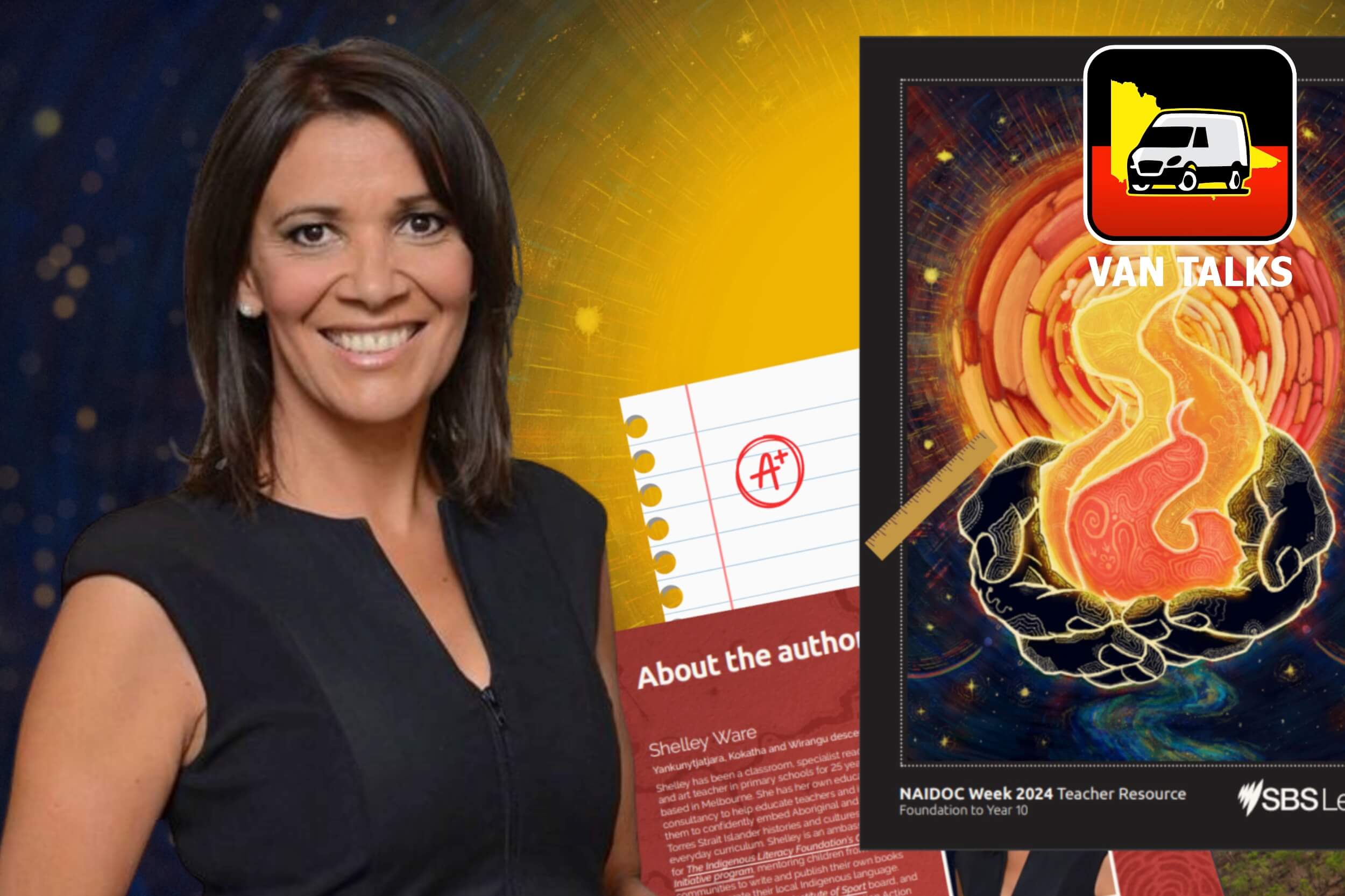
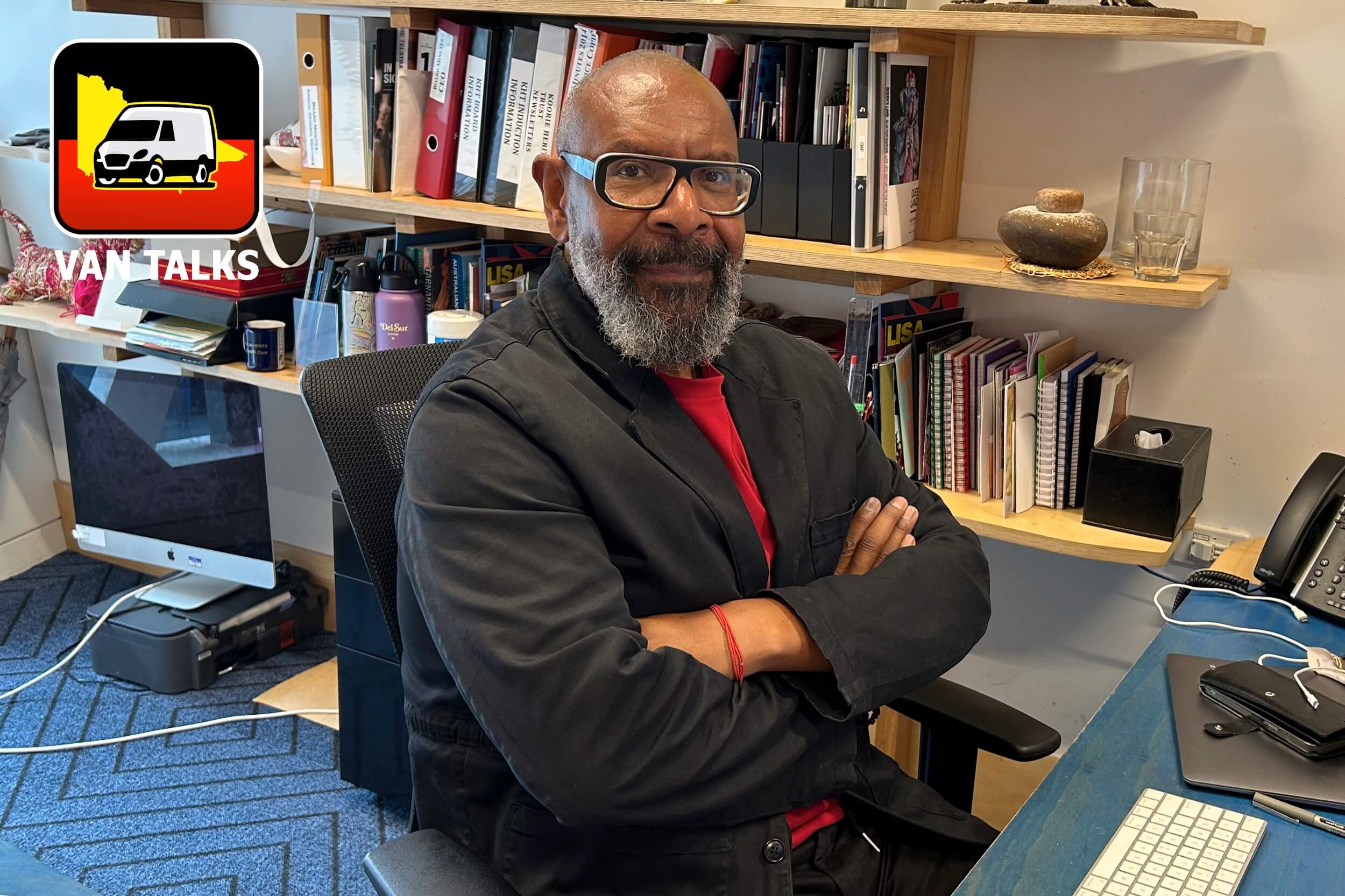
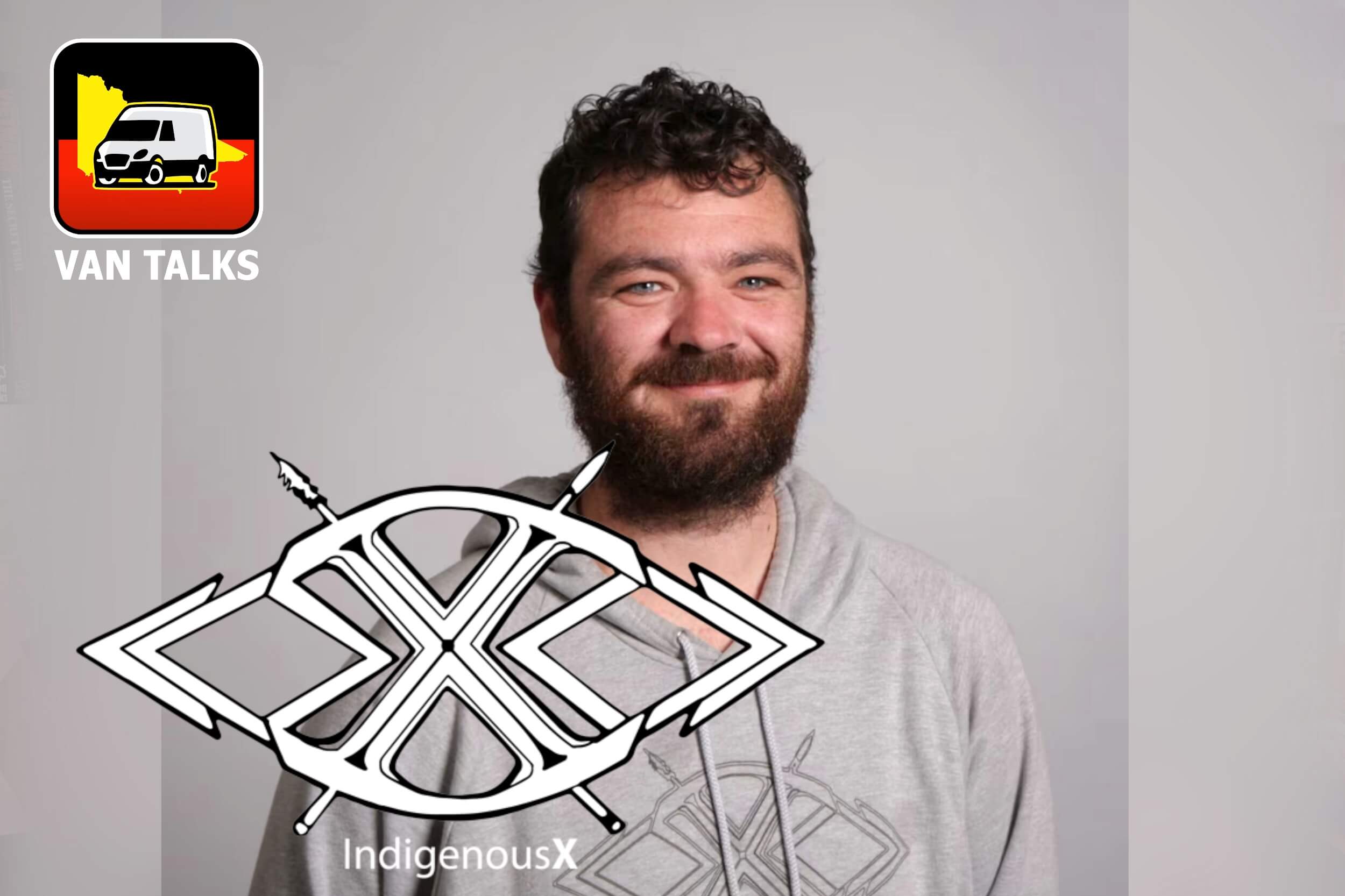
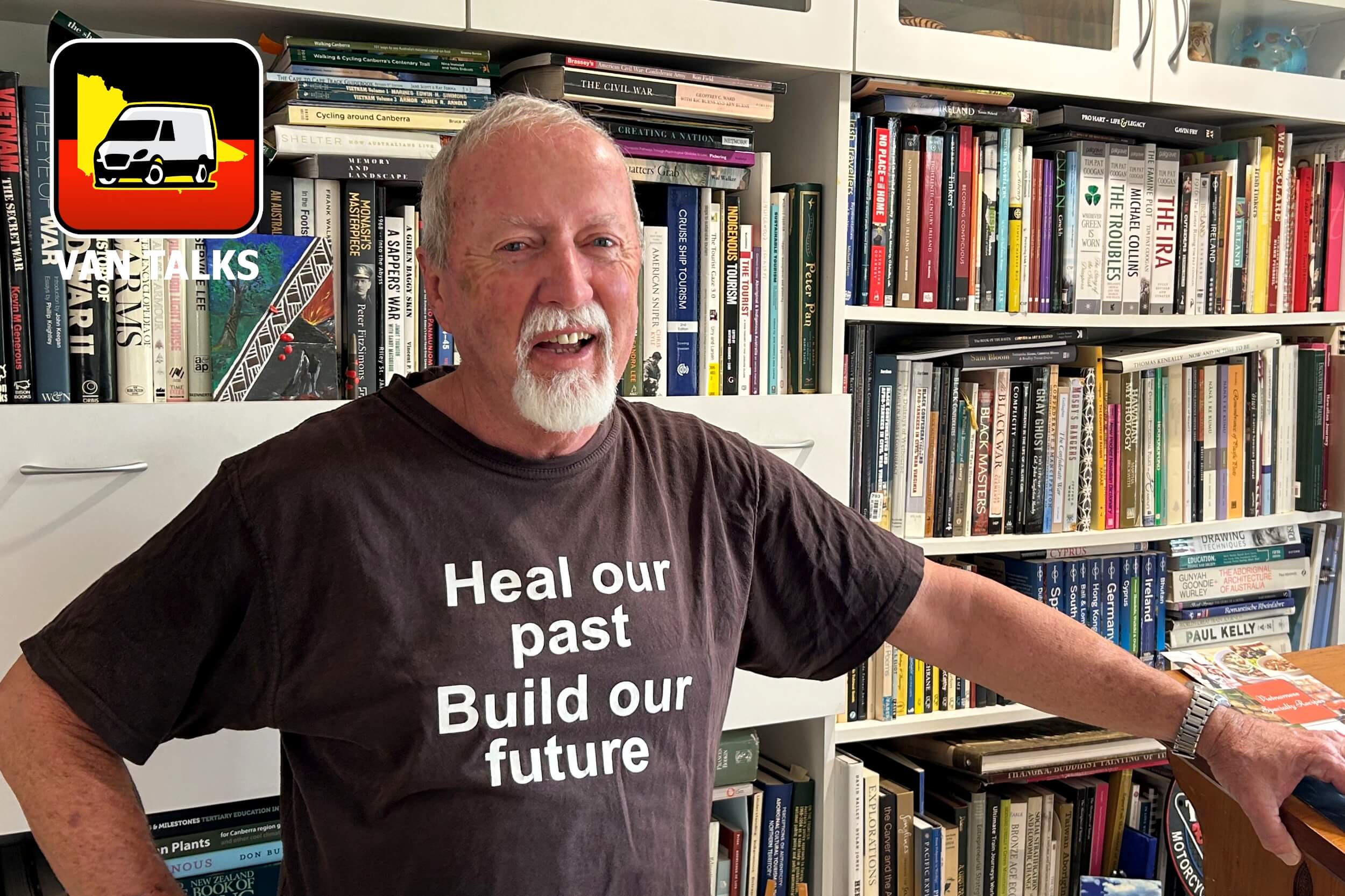
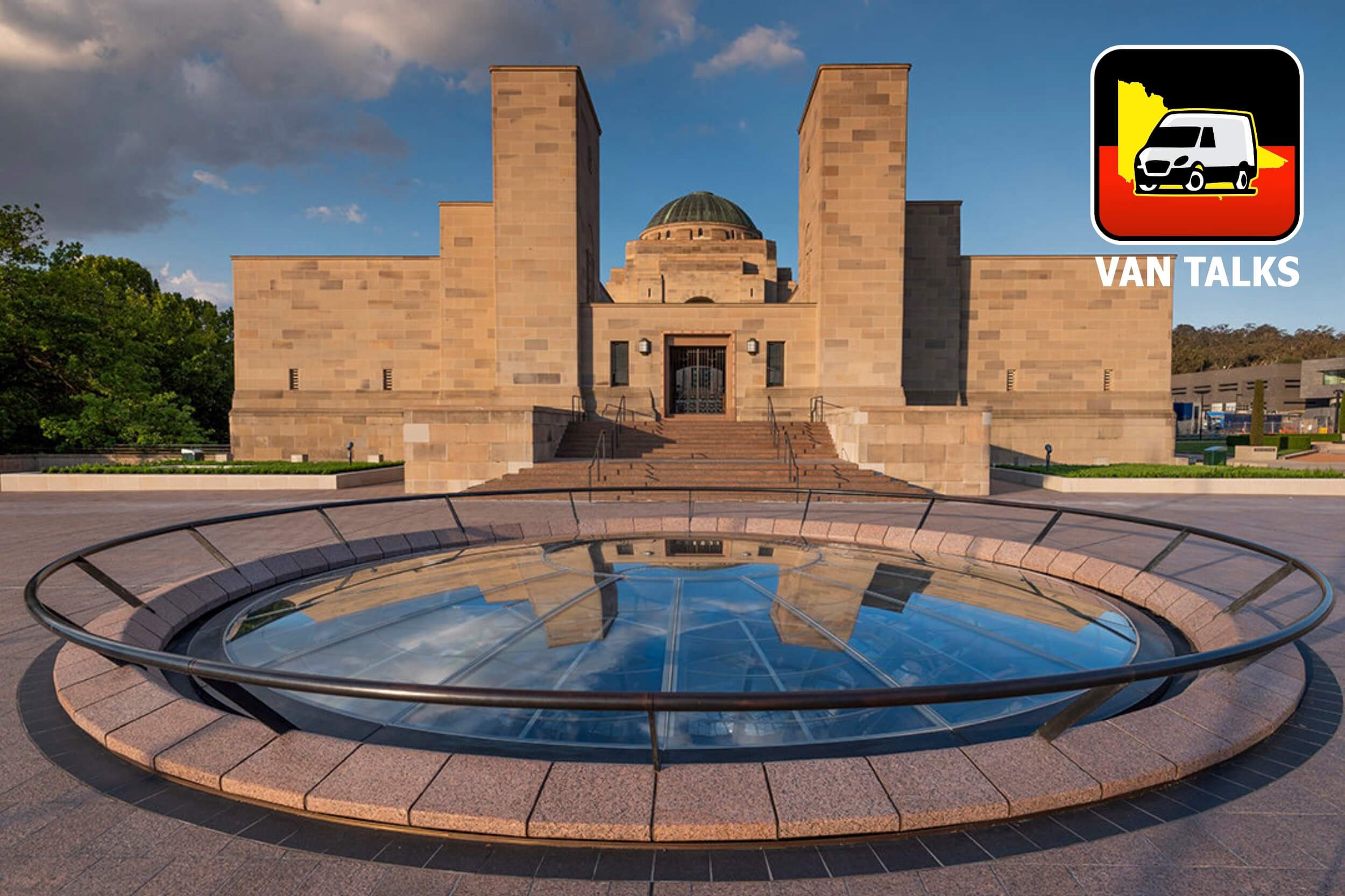

0 Comments